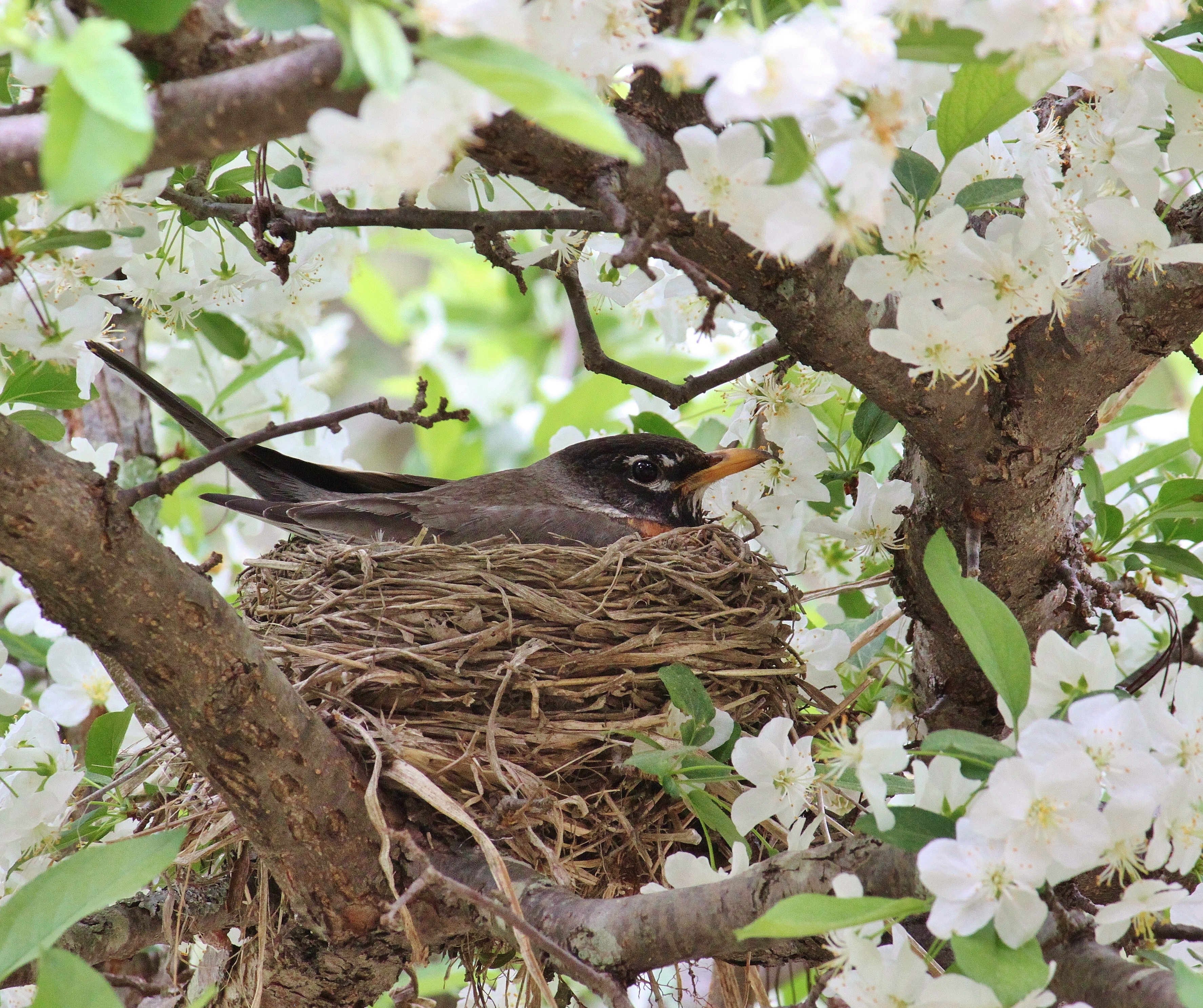American Robins Nesting – Video

This year, a family of American robins nesting in our pergola provided a great opportunity for me to capture the entire process with a trail camera. I noticed the nest one day while tending to my garden and quickly mounted the camera. I used an Exodus Lift II camera mounted about 4 feet from the nest. Because the birds would be moving in front of the camera so frequently, it’s likely that the camera would trigger almost constantly and the SD card would fill within a few days. To prevent that, I set a trigger delay of a few minutes. While video editing I zoomed in closer to the nest to provide a closer, albeit a grainier, view.
The video condenses the nestling phase to less than 2 minutes. In this case, the young spent 15 days in the nest (May 1st to May 15th), longer than the typical 12-14 days for this species. That was probably due to the unusually cold, wet weather. The parents didn’t seem to have any trouble finding worms, but the nestlings probably grew a bit more slowly than usual because more calories were used to keep warm.
In addition to providing food, the parents must also keep the nest clean. Watch carefully and you’ll notice that sometimes a parent ingests a nestling’s fecal sac and other times carries it away for disposal. As for many bird species, these robin parents were more likely to eat them when the nestlings were young and the fecal sacs small, and by the last few days they were carrying them all away. Ornithologists have proposed two possible explanations for this. One says that this is due to the decline in energy content of the droppings as the nestlings’ digestive tracts mature and more efficiently extract nutrition from food. The other says that eating the feces of young nestlings keeps parents close to the nest and saves them time that can be used for brooding, which is more important for younger nestlings. One study supported the former hypothesis but another study supported the latter, so the jury is still out.

Sources
Hurd, P. L., P. J. Weatherhead and S. B. McRae. “Parental Consumption of Nestling Feces: Good Food or Sound Economics?” Behavioral Ecology. 2 (1991): 69-76.
McGowan, K. “A Test of Whether Economy or Nutrition Determines Fecal Sac Ingestion in Nesting Corvids.” The Condor: Ornithological Applications. 97 (1995): 50-56.

A Beautiful Little Family 🙂 <3
Thank You for Sharing 🙂
They were a beautiful family. It was kind of sad to see them go, but I was thrilled that all 4 kids made it.
Very enjoyable and interesting. Thanks for sharing this!
My pleasure, Anne Marie. I’m glad you enjoyed it!